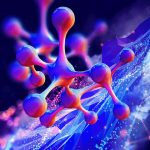Electrons are subatomic particles that carry a negative charge. They are found in the electron cloud of an atom, which is a region around the nucleus where the electrons are located. Electrons are important for many properties of matter, including electrical conductivity and magnetism.
Electrons Location
Electrons are subatomic particles that are found in all atoms. They are negatively charged and orbit the nucleus of the atom. The location of electrons can be determined using a variety of methods, including:
- Electron microscopes: These microscopes use a beam of electrons to create images of objects at very high magnification. This allows scientists to see the individual electrons that make up atoms.
- X-ray spectroscopy: This technique uses X-rays to excite electrons in atoms. The energy of the emitted X-rays can be used to determine the location of the electrons.
- Magnetic resonance imaging (MRI): This medical imaging technique uses a strong magnetic field and radio waves to create images of the body. MRI can be used to visualize the location of electrons in biological tissues.
The location of electrons is important for understanding the structure and behavior of atoms. For example, the location of electrons determines the chemical properties of an atom.
Here are some additional details about each of these methods:
Electron microscopes: Electron microscopes use a beam of electrons to create images of objects at very high magnification. This allows scientists to see the individual electrons that make up atoms. Electron microscopes are used in a variety of fields, including research, medicine, and industry.
X-ray spectroscopy: X-ray spectroscopy uses X-rays to excite electrons in atoms. The energy of the emitted X-rays can be used to determine the location of the electrons. X-ray spectroscopy is used in a variety of fields, including chemistry, physics, and materials science.
Magnetic resonance imaging (MRI): MRI is a medical imaging technique that uses a strong magnetic field and radio waves to create images of the body. MRI can be used to visualize the location of electrons in biological tissues. MRI is used in a variety of medical applications, including diagnosis and treatment of disease.
The location of electrons is an important topic in physics and chemistry. There are a variety of methods that can be used to determine the location of electrons, each with its own advantages and disadvantages.
Electrons Position
Electrons are subatomic particles that are found in all atoms. They are negatively charged and orbit the nucleus of the atom. The position of electrons is not fixed, but rather is described by a probability distribution. This means that there is a certain probability of finding an electron at any given point in space.
The position of electrons is important for understanding the structure and behavior of atoms. For example, the position of electrons determines the chemical properties of an atom.
Here are some additional details about the position of electrons:
- Electrons are not located in a single point, but rather in a cloud of probability. This means that there is a certain probability of finding an electron at any given point in space.
- The position of electrons is determined by the laws of quantum mechanics. Quantum mechanics is a branch of physics that deals with the behavior of matter and energy at the atomic and subatomic level.
- The position of electrons can be determined using a variety of methods, including:
- Electron microscopes
- X-ray spectroscopy
- Magnetic resonance imaging (MRI)
The position of electrons is an important topic in physics and chemistry. It is a complex topic, but it is essential for understanding the structure and behavior of atoms.
Here is a more concise version:
Electrons are not located in a single point, but rather in a cloud of probability. The position of electrons is determined by the laws of quantum mechanics. The position of electrons can be determined using a variety of methods.
Electrons Identify
Electrons are subatomic particles that are found in all atoms. They are negatively charged and orbit the nucleus of the atom. Electrons can be identified using a variety of methods, including:
- Charge: Electrons have a negative charge, while protons have a positive charge. This allows scientists to identify electrons by their charge.
- Mass: Electrons have a very small mass, about 1/1836 the mass of a proton. This allows scientists to identify electrons by their mass.
- Spin: Electrons have a spin of 1/2, which is a property of quantum mechanics. This allows scientists to identify electrons by their spin.
Here are some additional details about each of these methods:
Charge: Electrons can be identified by their charge using a variety of methods, including:
* **Electrostatic deflection:** Electrons are deflected by an electric field. This deflection can be used to determine the charge of an electron.
* **Magnetic deflection:** Electrons are deflected by a magnetic field. This deflection can also be used to determine the charge of an electron.
Mass: Electrons can be identified by their mass using a variety of methods, including:
* **Mass spectrometry:** This technique uses a beam of charged particles to separate particles by their mass. Electrons can be identified by their mass-to-charge ratio.
* **Cyclotron:** This device uses a magnetic field to accelerate charged particles. The mass of an electron can be determined by its cyclotron frequency.
Spin: Electrons can be identified by their spin using a variety of methods, including:
* **Stern-Gerlach experiment:** This experiment uses a magnetic field to separate electrons by their spin.
* **Nuclear magnetic resonance (NMR)**:** This technique uses a strong magnetic field and radio waves to measure the spin of electrons.Electrons can be identified using a variety of methods. Each method has its own advantages and disadvantages. The best method to use depends on the specific application.
Electrons Track
Electrons are subatomic particles that are found in all atoms. They are negatively charged and orbit the nucleus of the atom. The path of electrons can be tracked using a variety of methods, including:
- Cloud chambers: These devices use a supersaturated vapor to create a visible trail of charged particles. Electrons can be tracked by the path they leave in the cloud chamber.
- Bubble chambers: These devices use a superheated liquid to create a visible trail of charged particles. Electrons can be tracked by the bubbles they create in the bubble chamber.
- Tracking detectors: These detectors use a variety of methods to track the path of charged particles. Electrons can be tracked by the way they interact with the detector.
Here are some additional details about each of these methods:
Cloud chambers: Cloud chambers use a supersaturated vapor to create a visible trail of charged particles. When a charged particle passes through the cloud chamber, it ionizes the vapor molecules. These ionized molecules then condense to form a visible trail.
Bubble chambers: Bubble chambers use a superheated liquid to create a visible trail of charged particles. When a charged particle passes through the bubble chamber, it creates a shock wave that causes the liquid to boil. These bubbles then form a visible trail.
Tracking detectors: Tracking detectors use a variety of methods to track the path of charged particles. Some common methods include:
* **Gas ionization detectors:** These detectors use a gas to ionize charged particles. The ions are then collected and measured to determine the path of the particle.
* **Solid-state detectors:** These detectors use a solid material to ionize charged particles. The ions are then collected and measured to determine the path of the particle.
* **Magnetic field detectors:** These detectors use a magnetic field to deflect charged particles. The deflection of the particle is then used to determine its path.The path of electrons can be tracked using a variety of methods. Each method has its own advantages and disadvantages. The best method to use depends on the specific application.
Electrons Measure
Electrons are subatomic particles that are found in all atoms. They are negatively charged and orbit the nucleus of the atom. Electrons can be measured using a variety of methods, including:
-
Charge: The charge of an electron can be measured using a variety of methods, including:
- Electrostatic deflection: Electrons are deflected by an electric field. The amount of deflection can be used to determine the charge of the electron.
- Magnetic deflection: Electrons are deflected by a magnetic field. The amount of deflection can also be used to determine the charge of the electron.
-
Mass: The mass of an electron can be measured using a variety of methods, including:
- Mass spectrometry: This technique uses a beam of charged particles to separate particles by their mass. Electrons can be identified by their mass-to-charge ratio.
- Cyclotron: This device uses a magnetic field to accelerate charged particles. The mass of an electron can be determined by its cyclotron frequency.
-
Spin: The spin of an electron can be measured using a variety of methods, including:
- Stern-Gerlach experiment: This experiment uses a magnetic field to separate electrons by their spin.
- Nuclear magnetic resonance (NMR):** This technique uses a strong magnetic field and radio waves to measure the spin of electrons.
-
Energy: The energy of an electron can be measured using a variety of methods, including:
- Kinetic energy: The kinetic energy of an electron can be determined by its velocity.
- Potential energy: The potential energy of an electron can be determined by its position in an electric or magnetic field.
Here are some additional details about each of these methods:
Charge: The charge of an electron is a fundamental physical constant. It is equal to 1.602176634 × 10^-19 coulombs.
Mass: The mass of an electron is very small. It is equal to 9.1093837015 × 10^-31 kilograms.
Spin: The spin of an electron is a property of quantum mechanics. It is a quantum number that describes the angular momentum of the electron.
Energy: The energy of an electron can be determined using a variety of methods. The best method to use depends on the specific application.
Electrons can be measured using a variety of methods. Each method has its own advantages and disadvantages. The best method to use depends on the specific application.











